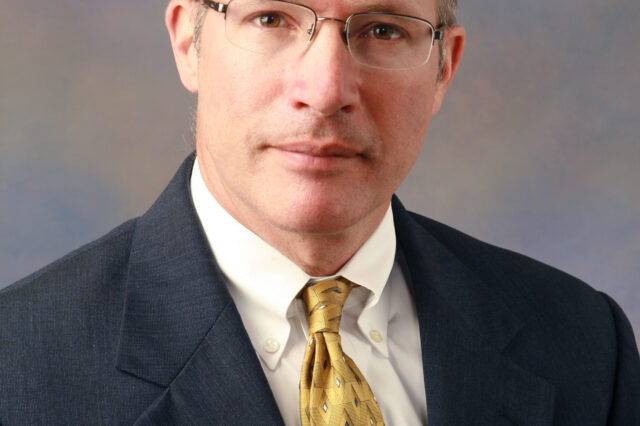UF vascular surgeon to evaluate dialysis access mechanisms

Thomas S. Huber, M.D., Ph.D., a professor in the division of vascular surgery and endovascular therapy at UF’s College of Medicine
A University of Florida vascular surgeon has received a $1.1 million five-year National Institutes of Health grant to evaluate a common surgical procedure, called an arm fistula, used to create access sites for patients needing hemodialysis.
Thomas S. Huber, M.D., Ph.D., a professor in the division of vascular surgery and endovascular therapy at UF's College of Medicine, will lead a multidisciplinary team of UF faculty to define the natural history of fistulas, a surgically created connection between an artery and a vein. Fistulas, which provide a single entry and exit point for blood flow for hemodialysis, are a common type of access for patients who need hemodialysis, a method of removing waste products from patients whose kidneys no longer function effectively.
The study is designed to track the health of patients who use this type of dialysis access. The UF team will work with five other centers across the country to outline practice patterns and create surgical guidelines with the aim of increasing the number of successful fistula procedures.
Huber said currently there is a higher than desired failure rate when fistulas are first created. Through this project, researchers hope to better understand why some fistulas cannot be successfully formed initially and why others do not mature, as they should, into the necessary size for use. The answers to these questions could provide cost savings and enhance patient care.
"The biggest single expense is maintaining dialysis access," Huber said with regard to hemodialysis care. He added that problems with access sites can be quite frustrating for patients.
Although fistulas cannot be used for dialysis until three to four months after they are created, they are the optimal access method because they can be used for a long time and are resistant to infection, Huber said.
UF vascular surgeons have about a 70 percent success rate in creating fistulas, a statistic that is higher than the national average.
While hemodialysis patients have other options for hemodialysis access, Huber said a functioning fistula is still a far better option than other approaches.
About 400,000 people are currently on dialysis, according to Huber. As the population ages, this number is expected to grow.